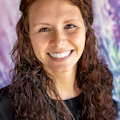How orofacial myofunctional therapy fits with dental hygiene
You may be hearing the term “myofunctional therapy” more frequently these days, but it’s far from a new field of study. In fact, it’s been recognized in the orthodontic field since the early 1900s, when pioneers Edward H. Angle and Alfred R. Rogers first identified how dysfunction of the tongue can contribute to malocclusion and orthodontic relapse.1
Myofunctional therapy is a series of treatments that addresses oral dysfunction and works toward establishing proper tongue, lip, and facial muscle functions and habits. It also identifies and addresses tethered oral tissues (TOTs) that inhibit proper function of the mouth and face.
The goals of myofunctional therapy
Myofunctional therapists have four main goals with all patients: proper tongue position, proper lip closure, nasal breathing, and proper swallowing patterns. Myofunctional therapists look to limit or remove compensations—the ways in which patients have learned to live with and “hide” their dysfunction.
We now know that patients do not “grow out of” tongue tie. We know that snoring is not cute in children. We know more about the systemic impacts of chronic fatigue, frequent nighttime awakenings, excessive daytime sleepiness, and mouth breathing.
Just because something is common does not mean it is normal, and the compensations patients develop around their orofacial myofunctional disorders (OMDs) often lead to symptoms elsewhere in the body, such as the ears, neck, shoulders, hips, and even feet.
You might also want to read
Alternative career paths for dental hygienists: Myofunctional therapy or lactation consulting
The process of myofunctional therapy
Overall, myofunctional therapy starts with assessing the structure, function, and behavior of each patient to best identify the root cause of their dysfunction. For each person, the cause of their OMDs is multifactorial and can stem from genetics, habits, developmental delays, epigenetics, and more. Following a comprehensive assessment, myofunctional therapists create a patient-specific program to address dysfunction.
Specifically, myofunctional therapists treat function and behaviors associated with the orofacial complex. However, when there is tension elsewhere in the body resulting from or contributing to tension of the mouth and face, additional support providers are required for proper treatment. Conversely, structural limitations such as narrow dental arches or enlarged tonsils and adenoids are addressed by support providers such as orthodontists or ENTs, respectively.
Other common providers used in myofunctional therapy treatment programs include physical therapists, occupational therapists, speech language pathologists, chiropractors, feeding therapists, craniosacral fascial therapists, sleep physicians, and others.
It’s important to note that myofunctional therapy is not swallowing, feeding, or speech therapy; However, it can be and often is a key component of achieving optimal results of other therapy programs when treatment is coordinated between several providers and professions.
The myofunctional therapy disconnect
Although OMDs have a large impact on the disease status of the human body, the ideas and methodologies of myofunctional therapy are typically not included in educational programs for medical schools, dental schools, residency trainings, or other advanced training programs. Those that are involved in myofunctional therapy and airway medicine have had to put in time and work on their own to seek answers for the root cause of a disease they see often in their patients.
Although the journey of airway health and learning about myofunctional therapy can be overwhelming, the benefits it provides patients is immeasurable. Several key learning points of myofunctional therapy are gaining awareness in other fields of study, and the knowledge is spreading.
The key is to keep asking
- Why does a patient have near-perfect home care yet high caries rates?
- Why does a young, thin, overall healthy patient have chronic fatigue or sleep apnea?
- Why is the prevalence of dental crowding, tonsillectomies, and ADD/ADHD increasing so rapidly?
- Why is a child wetting the bed past a reasonable age?
The answers to these and many other questions are often related to airway restrictions. This is where myofunctional therapy brings about a paradigm shift in the thinking of modern-day medicine and dentistry. Like most chronic diseases, prevention and early intervention of airway disorders are key to achieving the best treatment outcomes and guiding proper growth and development for long-term health.
You may be years into your airway studies, you may have attended a couple of CEs, or you may just be starting your journey. The best thing to do is keep going! The learning potential is endless for airway providers, and the benefit it brings to patients now and throughout their life is immense.
Reference
- Mills CS. International Association of Orofacial Myology history: Origin–background–contributors. Int J Orofacial Myology. 2011;37(1):5-25. doi:10.52010/ijom.2011.37.1.1
About the Author

Liz Laney, BSDH, RDH, OMT
Liz Laney, BSDH, RDH, OMT, has been active in the dental field since 2011 and has been practicing as an RDH since 2015, with additional training in airway dentistry and orofacial myofunctional therapy. She has experience and advanced education in several areas of dentistry, including infection control, dental hygiene policy and procedure creation and implementation, and periodontics. Reach her at [email protected]. To learn more and follow along with Liz's myofunctional therapy cases, check out her website at rootcauseresolutionsllc.com.
Updated January 22, 2024
